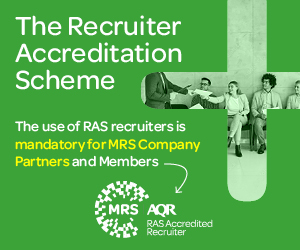Overwhelmed by Customer Survey Comments? Make Sense of it all with Sentiment Analysis.
TTi Global Research – 16 February 2019
Source www.tti-global-research.co.uk
A common question for researchers and businesses undertaking customer, employee and other stakeholder satisfaction surveys is: What do we do with all these comments?
Open ended survey questions grant the respondent free reign to state detailed opinions freely in order to inspire detail and meaningful answers. These are hugely valuable and enable people to express how they feel about an organisation, service, or issue in their own words. Answers have huge potential to reveal problems, pointers and potential solutions about what needs to change in order for businesses to move forward, while also highlighting key customer issues and solutions that organisations may not have previously considered.
Sounds great! However, when we consider these responses in comparison to simple ‘tick a box’ responses yielded by asking close-ended survey questions, they are far more difficult to quantify and analyse due to the variety of formats they can manifest in – often ranging from short, snappy answers to long-form comments with detailed examples.
At TTi, a crucial element of our core research process is ensuring our clients are making full use of the detail provided by the use of such open-ended responses alongside the hard data findings. The result of this is organisations see the full benefit of the highest quality output and are able to form detailed and focussed action plans.
Advanced Survey Comments & Feedback Analysis.
When analysing detailed, open-ended responses, TTi Research applies a series of intelligent analysis techniques – including natural language processing. This enables us to take large volumes of language information and translate it into clear, digestible, data-led summaries, providing clients with a quantifiable picture of respondents’ true ‘sentiment’ about a wide range of themes and subjects.
In order to accurately determine whether a writer’s attitude towards a service, product, or process is positive, negative, or neutral, it is essential to be able to accurately identify and categorise the subjective opinions expressed.
TTi Research does this in 3 key stages:
o Breaking down and categorising comments into core subject areas
o Analysing comments to understand the sentiment behind each one
o Categorising comments and applying frequency counts to gauge the volume of comments by each topic area.
Only once we are able to identify and understand these core themes, are we able to single out the key issues an organisation needs to prioritise, and the actions needed to address them.
See our sentiment analysis in action with YVOS (Your Voice Opinion Survey)
Benefits of TTi’s Sentiment Analysis Platform
o Flexible Business Research Solution – Our sentiment analysis scores can be applied to verbatim comments and feedback across all areas of B2C and B2B business environments. By determining whether comments are positive, negative or neutral, we can determine all manner of reactions to a brand. From gleaning insight such as how customers feel about the effectiveness of customer support teams, to using it as a measurement to gauge overall opinion on a company’s products or services. It can also identify customers’ reaction to new products and marketing campaigns, as well as harness employees’ opinion of their working environment to isolate factors that drive (and dampen) employee engagement.
o Identifying and Solving Customer and Stakeholder Pain Points – By comparing sentiment analysis scores across different customer segments, companies can easily identify and resolve common pain points and frustrations in their customer and other stakeholders’ journeys. It also allows comparison of customer satisfaction between different product lines and services, highlighting where improvements are needed to reduce customer grievances and raise satisfaction.
o Increasing Market Share – Using sentiment analysis to consistently monitor attitudes and opinions about their products, services, and areas such as customer support effectiveness, brands can identify shifts in opinions and adapt to meet the changing needs of their audience, helping retain and attract new customers.
o Competitive Advantage – Sentiment analysis is an effective tool for measuring competitors’ performance, uncovering what rival businesses do well and not so well, enabling a business to distinguish itself from competitors, whether on price, product/service offering, or customer service, to become a favourite provider.
TTi Global Research has been applying sentiment analysis to effectively read audience attitudes for almost thirty years. We help companies of all sizes and sectors harness the customer, employee and stakeholder insight they need make informed strategic decisions, helping them improve and grow.
Get the latest MRS news
Our newsletters cover the latest MRS events, policy updates and research news.















